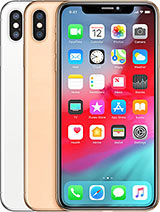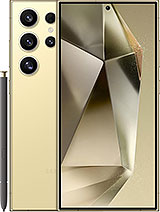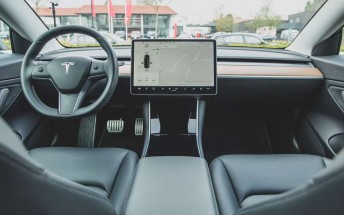How do we get 3-4 day battery life & when?

Its a quixotic demand we make of our smartphones - we want the power of a super computer with the battery life of a Amazon Kindle in our pockets. Nothing promotes more debate and fills our comments section faster than the subject of battery life. No matter how much we wax lyrical about the latest hardware included in our devices the battery technology has hardly changed.
Taking the last 6 years of iPhone models, using data from the results of our battery life tests, you can see that while battery life is being eeked out, it’s not the dramatic exponential growth that we would see if charted CPU performance for example.

iPhone endurance battery chart since 2011 iPhone 4s
It’s become the norm to accept that our devices will last 1-2 days at best, with some manufactures avoiding the subject altogether. During the September 12 iPhone announcements Phil Schiller never mentioned battery life for the iPhone 8 and iPhone 8 once, with the focus instead being on the long overdue wireless charging capabilities. Phil did only talk about battery life when announcing the iPhone X, stating that it had an extra 2 hours of battery life over the iPhone 8 which in truth is actually provided by the extra 895 mAh battery capacity.
Lithium Ion batteries that can be dated back to the 1970’s were commercialized in the early ‘90’s and we’re still using them today. We need a battery revolution but don’t hold your breath for that, it could take another 10 years for the next generation of batteries to be powering our devices. This article isn’t about what will be powering the next generation of smartphones but what’s likely to reduce the draw on the batteries that we have today.
In no particular order of priority, the notable battery hogs, outside of rogue apps, are the display, the radios and the chipset, so we'll address those in order.
Display
It wasn’t always the case, but we’ve almost reached a tipping point where AMOLED is more power efficient than LCD. It’s a complex subject and even harder to measure as you have to take into account not only screen brightness but APL (Average Picture Level) which is based on what’s actually being displayed.
Ideally, at this juncture, we would provide a sexy graph or figure comparing LCD and AMOLED power consumption. The reality is that there are so many variables involved that this is nigh on impossible.
To illustrate this, let’s take the iPhone X and iPhone 8 Plus. Excluding the screen, these two have identical innards. Even the batteries are have a difference of a mere 25 mAh in favor of the iPhone X. However, in our battery tests for Web browsing and Video playback the iPhone 8 Plus bests the iPhone X by just over 3hrs and just under 3hrs respectively. That could be because the iPhone X has more pixels have to push or there might be some inefficiencies due to the layered battery introduced in the iPhone X. Or is it Face ID that's a battery hog? We feel we could go on but the point is clear.

iPhone X vs iPhone 8 Plus battery comparison
Micro LED
Micro Led or mLED was invented in 2000 and is perhaps one of the closest to trial production and commercialization. Micro LED is a display technology that is based on tiny micro LED devices utilized to form the color pixels. Sharing many traits with OLED they eliminate the need for back lighting and due to their smaller size allow for even higher resolutions that are also flexible in nature. What we're interested in though is power consumption and it’s been stated that a mLED display provides 2-3 times the brightness of an OLED display whilst consuming the same power. If these figures bear true in the real world then Micro LEDs could improve battery life twice! Now this is more like it.
This is a game changer which is why in 2014 Apple acquired LuxVue, Foxconn Electronics announced that it plans to acquire eLux and it’s long rumored that Samsung will acquire PlayNitride, all micro LED start ups. As always, the challenge is taking this technology through to commercialization. It’s highly probable that the focus will be on smaller display panels for wearable and VR hardware at first. Based on current estimates, the earliest we would expect to see products based on mLED panels would be 2019 with acceptable smart phone yields a couple of years after that.
5G & Bluetooth 5.0
Due to be ratified in 2018, 5G is the fifth generation 5G wireless standard. One of the primary considerations when developing the 5G standard was a reduction in power consumption. This is achieved in part through the implementation of flexible sleep modes but additional considerations are also a factor.
When your smart phone connects to a cell tower, it attempts to connect you to the nearest tower. However, if that tower has no spare capacity you’re connected to a tower further away which results in a greater battery drain. More devices will be able to connect to 5G though. Both due to the frequencies used, but also in a desire to expand the network capacity, 5G will be enabled by utilizing small cells over shorter distances as opposed to a single large tower covering greater distances. The result is that you will be able far more often to a very local cell which will reduce battery drain.
5G also promises greater data rates. Qualcomm says 5G will be able to boost capacity by four times over current systems by leveraging wider bandwidths and advanced antenna technologies. It’s been claimed that 5G should enable a 20% power saving. Current estimates are for the arrival of 5G sometime in 2019-2020.
This increased data rate is also realized with the Bluetooth 5.0 standard which doubles the BLE data rate. The result of these boosted data rates from 5G and Bluetooth 5.0 is that the radios are powered for less time resulting in a battery saving.
Wireless Charging
Slightly off topic but relevant nonetheless, wireless charging isn’t new and it’s far more convenient than plugging your phone into a power source via a cable. Today we experience this ‘magic’ over small distances though measured in millimeters and we still have to place our phones on a ‘target’ charging pad.
One of many start ups working on getting round this is Pi, who recently (Dec ‘17) received an $11.4M investment via their Series A round. Founded in 2015, Pi delivers wireless power by creating a weak magnetic field, made possible by their proprietary magnetic beam forming technology. Facilitating charging at a distance and in any orientation. Pi are currently planning to ship their first product sometime in 2018.

Pi's wireless charger is currently up for pre-order with a planned launch in 2018
Another approach is that taken by uBeam, they’re developing a solution that relies on ultrasound. The transmitter, which could look like a piece of art on your wall, converts energy and data into sound waves. Via an ultrasound transducer, the sound is converted into energy to charge your smart phone. One limitation of this technology is that it’s line of sight only and will cut out if an object gets in the way. This is no bad thing considering ultrasound is used to break up kidney stones. Whilst demonstrated this year, they’ve provided no additional information on if/when this technology will be launched.
It will be a while yet before a single standard emerges before it’s built into our phones. But once widely adopted it may well be that the issue of battery life is a moot point if your phone is being charged more often and conveniently at work, home and whilst you travel.
System on a chip (SOCs) and co-processors
With every new chip set announcement we’re delivered greater performance at a higher efficiency. Qualcomm’s recently unveiled Snapdragon 845 platform promises much and “all with extended battery life, so you can keep up with what’s important”. So given this, why aren’t we seeing true multi-day battery life?
In part, that’s our fault. In addition to that battery having to power and push a greater amount of pixels around a larger screen for example, we’re using all the other amazing features that we’ve been provided with. We’d argue that manufactures have done well to keep battery life where it is today. It may not be long before we need to include a AR/VR specific test in our battery results to even better reflect what we’re using our smart phones for today.

Qualcomms Snapdragon 845 platform - increased power with greater efficiency
Over a relatively short period of time Apple has developed more of its silicone in house. Most recently the iPhone 8,8 Plus and X utilize an Apple design GPU and prior to that the W1 chip improved not only ease of use but battery life when using Bluetooth headphones.
If recent rumors are to be believed Apple is well underway in designing it’s own Power Management Integrated Circuit (PMIC) for inclusion in future iPhones to extend battery life by several hours. Could this help them manage the dual layered battery better in the iPhone X and was this why our battery tests results were unexpected?
Wrapping up
While not exhaustive, this is a flavor of a number of the emerging technologies that are coming downstream to take away our battery blues while we wait for a revolution in battery technology.

A flavor of some of the technologies that will increase our smart phone battery life
We started this feature with a battery chart from the last 6 years. If all the above comes to fruition, within the next 6 years we should see our smart phones have a 3-4 day battery life as standard, all whilst being charged as we go about our daily lives. 10 years out, with a revolution in battery technology we could well get the same endurance as we did with featurephones.
We'd like to end with a plea to manufacturers. Please don’t use all these battery efficiencies to reduce the size of the battery in our phones even further so you can give us a 3mm thick smart phones!
Related
Reader comments
- Boebus666
- 17 Jan 2018
- KSe
I'm not a power user at all, I use my Galaxy S8 [Exynos] for basic stuff throughout the day and usually keep mobile data, location, WiFi etc off unless I need it.. I can get 5 days out of one charge without even using the power saving feature.. That'...
- AnonD-190634
- 25 Dec 2017
- dMi
They really don't last 2 days if you're a heavy user. But anyways, I'd be happy if I didn't have to replace the battery every 2 years :| or sometimes 1.5 years with these fast chargers! I mean its not like you can just remove the back anymore! ...
- Spike1
- 21 Dec 2017
- xf7
1 to 2 days? Can you please tell us which High end phone does it? I barely use my phone and still loose battery.Note 8. The last thing you said is what needs to happen: if you can give people options in screens, gives also an option in batteries!!...







 Samsung
Samsung Apple
Apple Apple
Apple Samsung
Samsung


